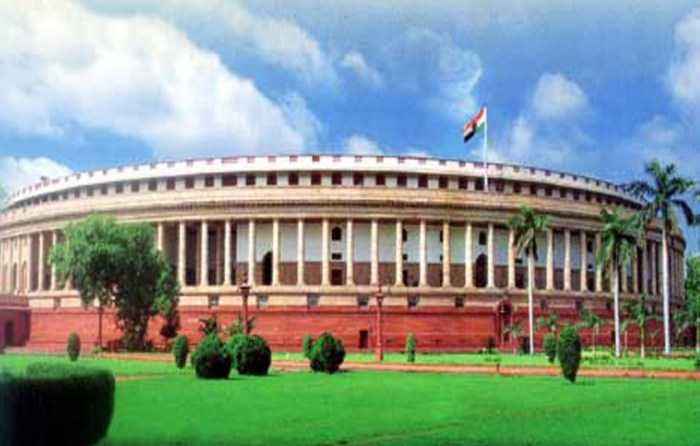Households don't create deposits, banks do
Mutual Fund
The slow growth in bank deposits has been a matter of concern, particularly as growth in private credit has outpaced deposits for the last two years now. This has largely been attributed to the decline in household savings or to a shift to physical savings or even a shift to alternate financial savings like mutual funds.
Aggregate deposits are not driven by household savings
However, contrary to intuitive belief, household savings do not create deposits. This seems incompatible with our lived observations as we personally make deposits only from our savings. Statistics such as 60% of Indian bank deposits are from households also propagate a similar narrative.

Source: RBI
The question to be asked though is that how did the individual get this money?
Typically, this is the income received from another individual or firm. The salary a person receives from his employer is the deposit in employer’s account that shifts to his account. He retains part of this deposit in his account (his saving) and spends the rest, i.e. shifts to bank deposit of a shop owner. Therefore, neither spending nor saving has an impact on the total deposits, it just determines in whose account the deposits reside. The money moving from one individual to another within the economy are what economists called “transfers”. Similarly, if rather than a financial saving, he chooses to invest in a physical asset (say a house) or an equity share, the deposit in his bank account would be transferred to the seller’s account.
China for instance has seen deposit growth in its banking system hover around 10% over the past decade despite the household savings rate being sustained at around 35% and nominal GDP growth at 8% (2012-2022).
China & India - Households Savings & Deposit Growth

Source: Morgan Stanley
Banks create deposits
Money and deposits are ONLY created by banks. The central bank creates reserve or high-power money, which is the liability on its balance sheet primarily by printing currency. Additional deposits are created by commercial banks when they extend loans either to the government or private sector. Therefore, aggregate deposits in the economy are emanating from the reserve money created by RBI and the money multiplier based on the credit extended by the commercial banks.
Over the past two years pace of credit extended by banks picked upto 15% and reflected in the money multiplier moving up to 5.4x in FY24 from 5x in FY22.

Source: RBI
However, the pace of money creation (M3 growth) remained unchanged at 10% as reserve money growth slowed to 5.6% in FY24 from a high of 18.8% YoY in FY21. This was primarily due to currency in circulation rising only 4% YoY with the withdrawal of the Rs 2,000 denomination notes.

Source: RBI
Source of deposits matter
In the current regulatory LCR (Liquidity Coverage Ratio) framework, banks’ ability to extend loans depends both on aggregate deposit growth as well as the type and source of deposits. Retail and wholesale deposits have large variance on expected run-off rates in LCR calculations. Therefore, while banks can lend upto 77.5% of retail term deposits, they can lend only about 55% of their callable wholesale deposits.

Source: Axis MF Research
Share of households in bank deposits has only changed marginally from 63% in 2018 to 61% since 2024. Much larger change has been visible in share of government deposits dropping from 14% to 9% and share of corporate deposits increasing from 10% to 18%. The rise in corporate deposits is representative of the turn in corporate profitability that has improved from 2% of GDP in 2018 to 5% now.

Source: Morgan Stanley, RBI
The drop in government deposits is also attributable to the government migrating to a more efficient Just In Time (JIT) model. In order to improve the efficiency of cash management, Central Government has adopted JIT system for release of funds for payments in last few years. This move has resulted in the Government maintaining relatively higher average balances with RBI and commensurately lower balances with banks.
Share of lower cost (CASA) deposits for banks has moderated from a high of 42.6% in 2021 to 38.8% in 2024. This recent moderation can be attributed to shift in savings behavior, though the past ten-year average CASA share for bank has been similar at around 39.2%.
Monetary cycle will drive revival in deposit growth
India’s credit to GDP multiplier has averaged 1.1x. To sustain double digit growth in nominal GDP, the current pace of credit growth will be needed to be met. While concerns abound about weak deposit mobilization limiting credit availability, this appears unlikely to sustain as credit itself creates deposits. With easing inflation and softer global rates, RBI comfort on infusing higher reserve money to boost M3 growth is likely to improve. This will create a virtuous cycle of improved reserve money creation boosting money supply allowing faster credit and deposit growth.
Disclaimer
Source: Axis MF Research, RBI, Morgan Stanley, Bloomberg. Data as on 31 August 2024.
Disclaimer: Past performance may or may not be sustained in the future. The Stocks mentioned above are used to explain the concept and is for illustration purpose only and should not be used for development or implementation of any investment strategy. It should not be construed as investment advice to any party.
This document represents the views of Axis Asset Management Co. Ltd. and must not be taken as the basis for an investment decision. Neither Axis Mutual Fund, Axis Mutual Fund Trustee Limited nor Axis Asset Management Company Limited, its Directors or associates shall be liable for any damages including lost revenue or lost profits that may arise from the use of the information contained herein. No representation or warranty is made as to the accuracy, completeness or fairness of the information and opinions contained herein. The material is prepared for general communication and should not be treated as research report. The data used in this material is obtained by Axis AMC from the sources which it considers reliable.
While utmost care has been exercised while preparing this document, Axis AMC does not warrant the completeness or accuracy of the information and disclaims all liabilities, losses and damages arising out of the use of this information. Investors are requested to consult their financial, tax and other advisors before taking any investment decision(s). The AMC reserves the right to make modifications and alterations to this statement as may be required from time to time.
Statutory Details: Axis Mutual Fund has been established as a Trust under the Indian Trusts Act, 1882, sponsored by Axis Bank Ltd. (liability restricted to Rs. 1 Lakh). Trustee: Axis Mutual Fund Trustee Ltd. Investment Manager: Axis Asset Management Co. Ltd. (the AMC) Risk Factors: Axis Bank Limited is not liable or responsible for any loss or shortfall resulting from the operation of the scheme.
(Mutual Fund investments are subject to market risks, read all scheme related documents carefully.)
MUTUAL FUND TOOLS & CALCULATORS
Recent News
-
The Wealth Company Mutual Fund Receives SEBI Approval to Launch Specialized Investment Fund SIF
Nov 26, 2025
-
Axis Mutual Fund Launches Axis Multi Asset Active FoF Fund of Fund: A One Stop Solution for Dynamic Asset Allocation
Nov 21, 2025
-
The Wealth Company Mutual Fund makes record debut with four active NFOs, garners close to Rs 2000CR
Oct 29, 2025
-
Axis MF Launches Axis Income Plus Arbitrage Passive FOF
Oct 28, 2025
-
Aditya Birla Sun Life AMC Press Release Q2 FY26 Final
Oct 28, 2025







